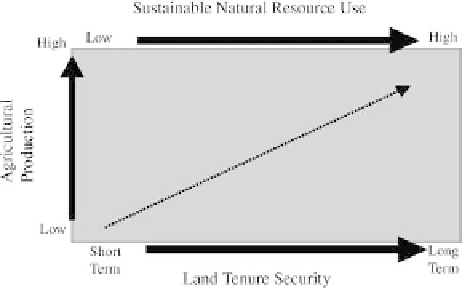Agriculture Reference
In-Depth Information
Figure
10.7. Historical U.S. farm cropland value. (Adapted from USDA - NASS, August 2005.)
investments in the land. The amount of land managed under customary land tenure
ranges from 14 percent in Botswana and South Africa to 80 percent in Mozambique
and 81 percent in Swaziland.
3
This leads to a large degree of uncertainty for the individ-
ual farmer about investing in land. It is difficult for an individual to purchase land.
A related problem is caused by HIV/AIDS. Many families have lost one parent,
often the male, leaving the mother to care for the children and cultivate the land. In
Lesotho, Malawi, and South Africa it sometimes occurs that upon the death of the
male head of household, the patrilineal kin assign rights of cultivation to another
family to avoid underutilization of the land.
3
Movements are underway in these
countries to guarantee usage rights to women and even older children.
The land tenure problem can be summed up best by Figure 10.8. Greater land
tenure security is associated with higher agricultural production and more sustainable
natural resource use. Higher agricultural production results in long-term investment
such as irrigation systems, machinery, and buildings. Sustainable natural resource
use is reflected in reduced soil erosion and maintained, or improved, soil fertility.
In an attempt to improve agricultural production and security of land tenure, some
countries undertake what is commonly known as agrarian reform. The ultimate goal is
Figure
10.8.
Relationship between land tenure security and agricultural production.
3










